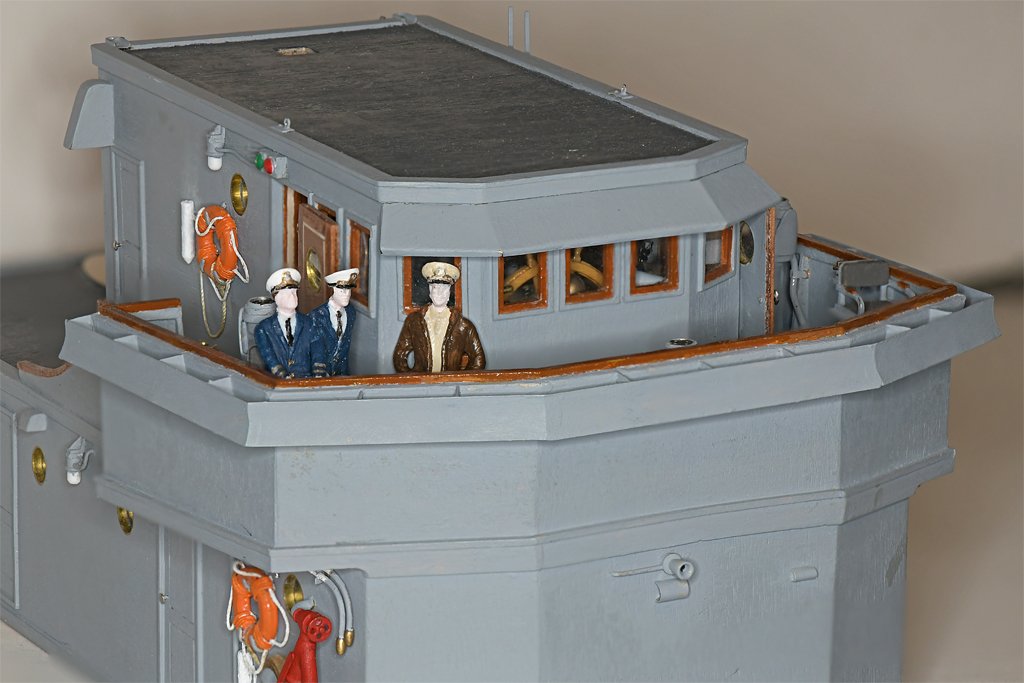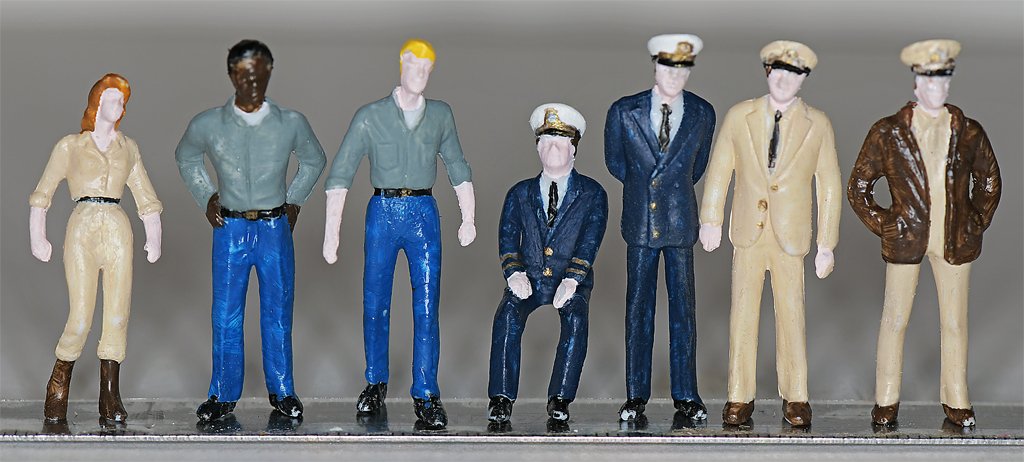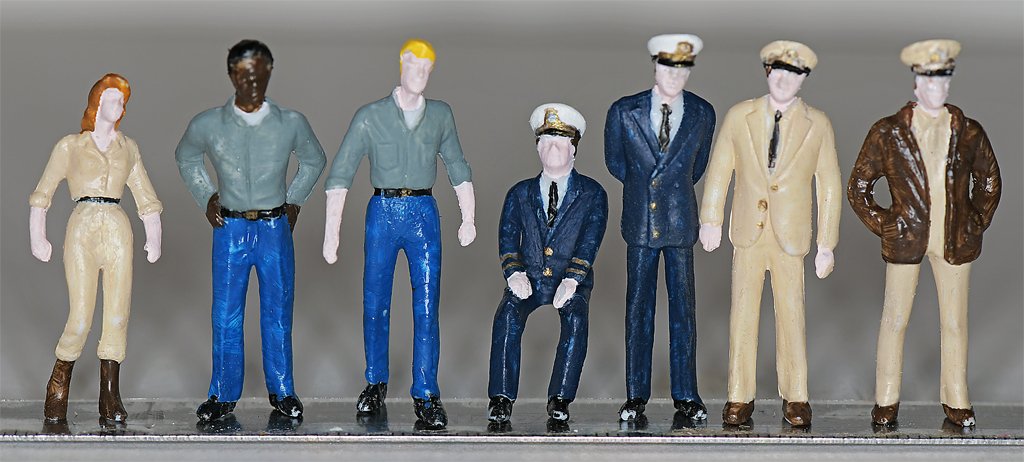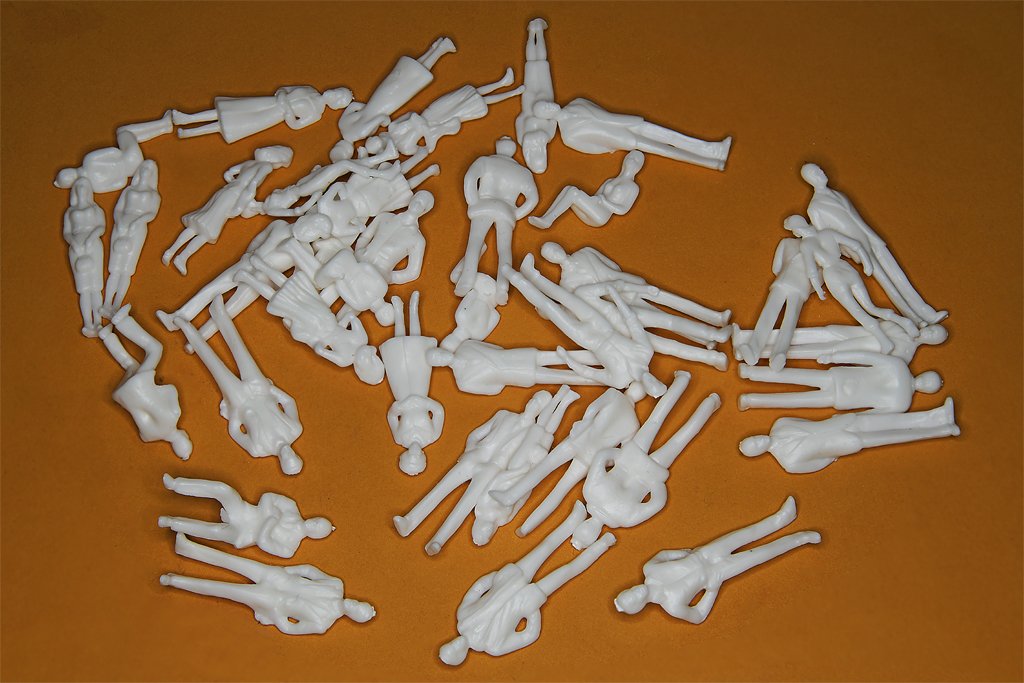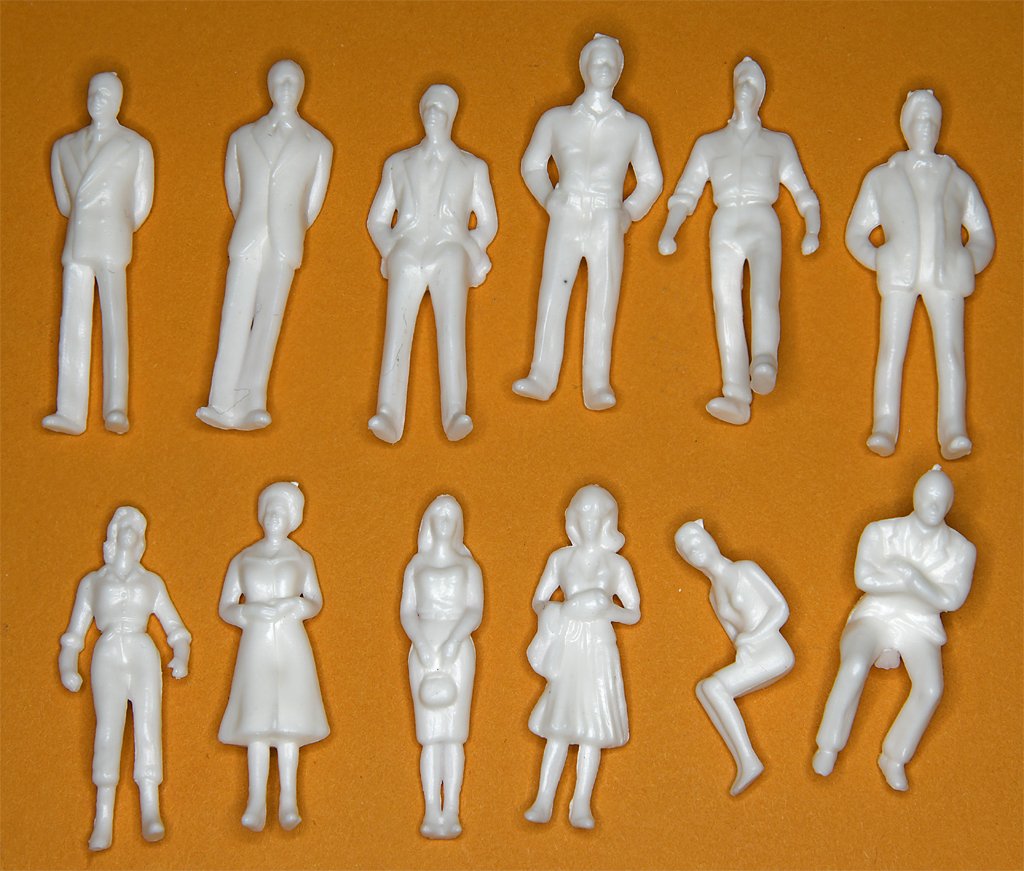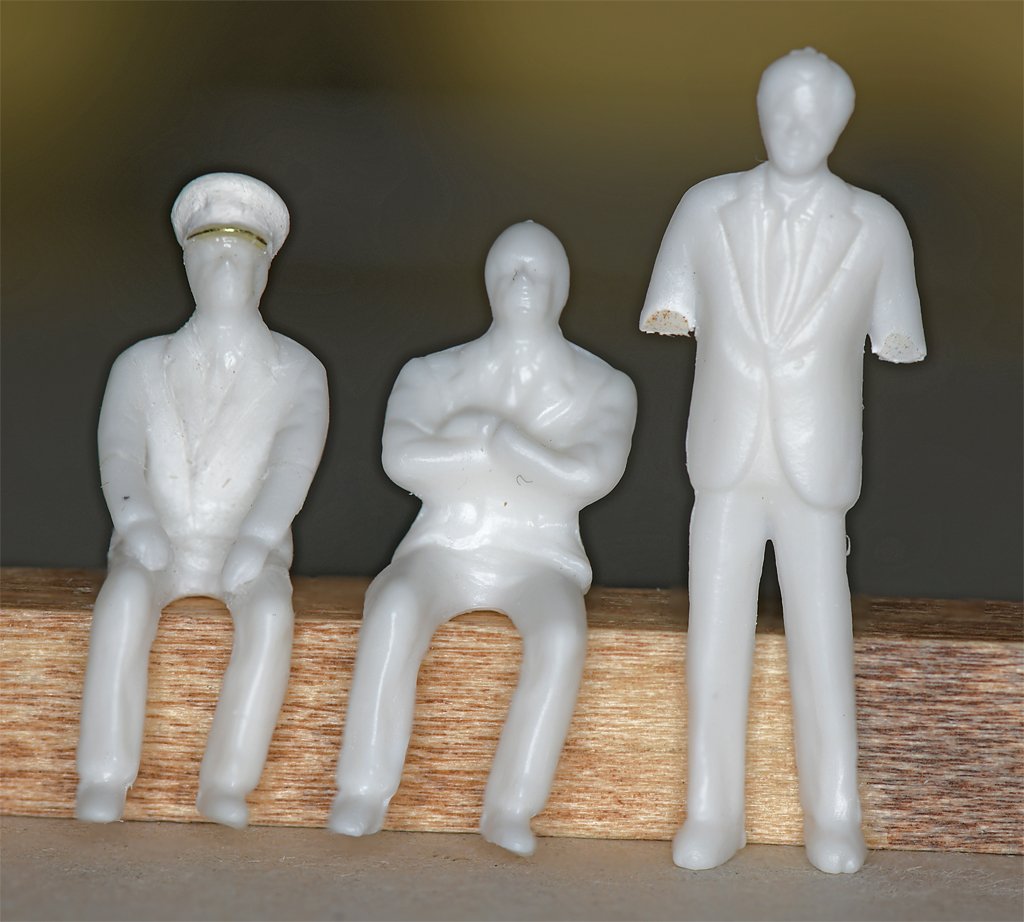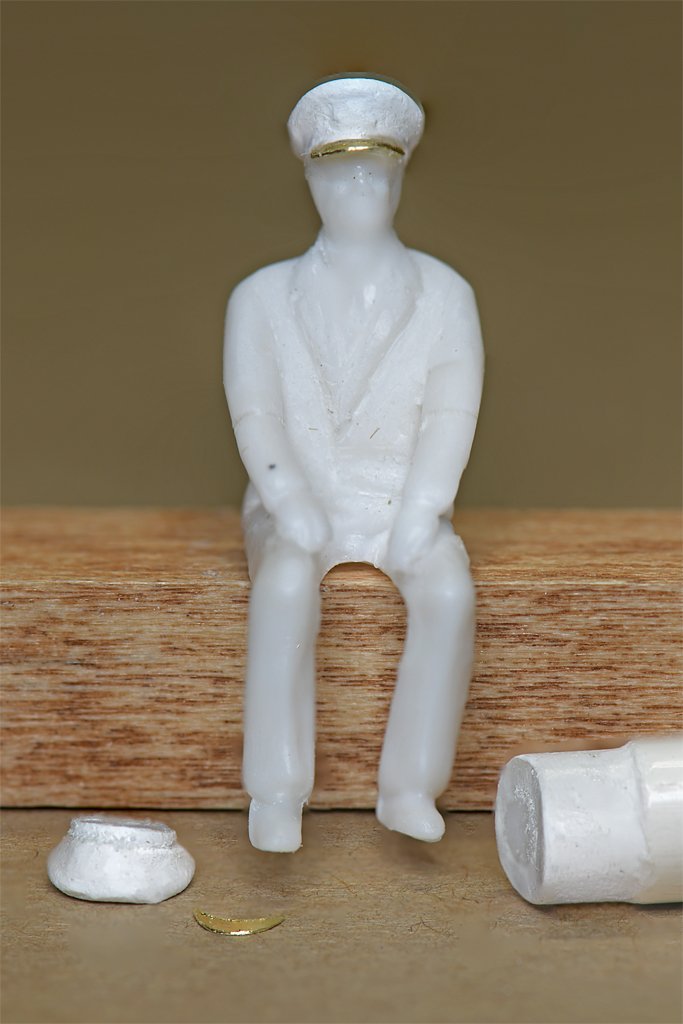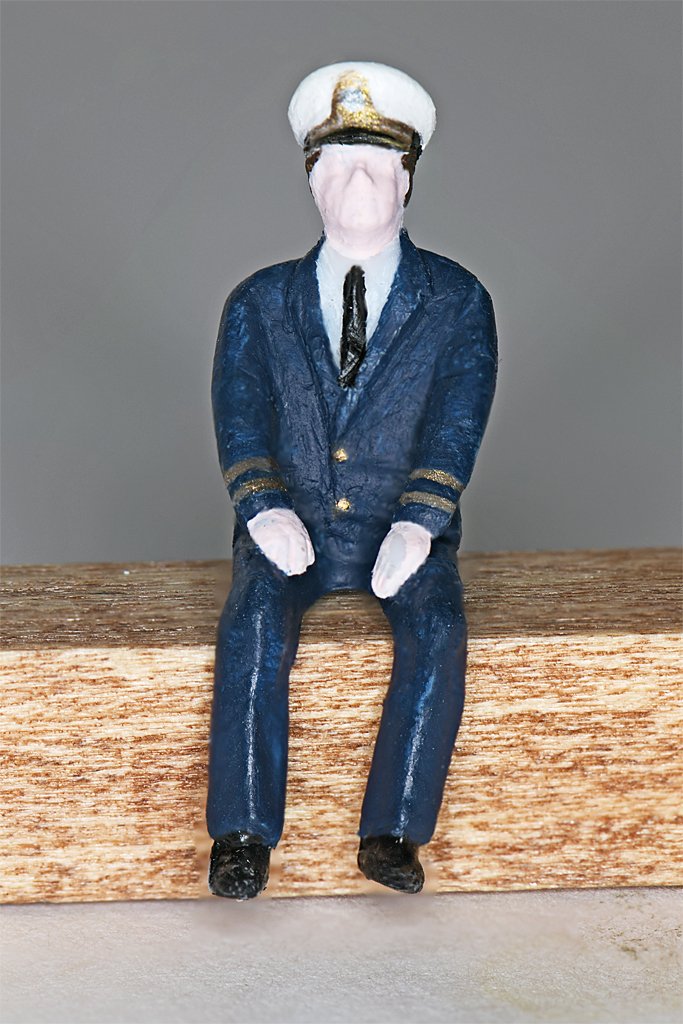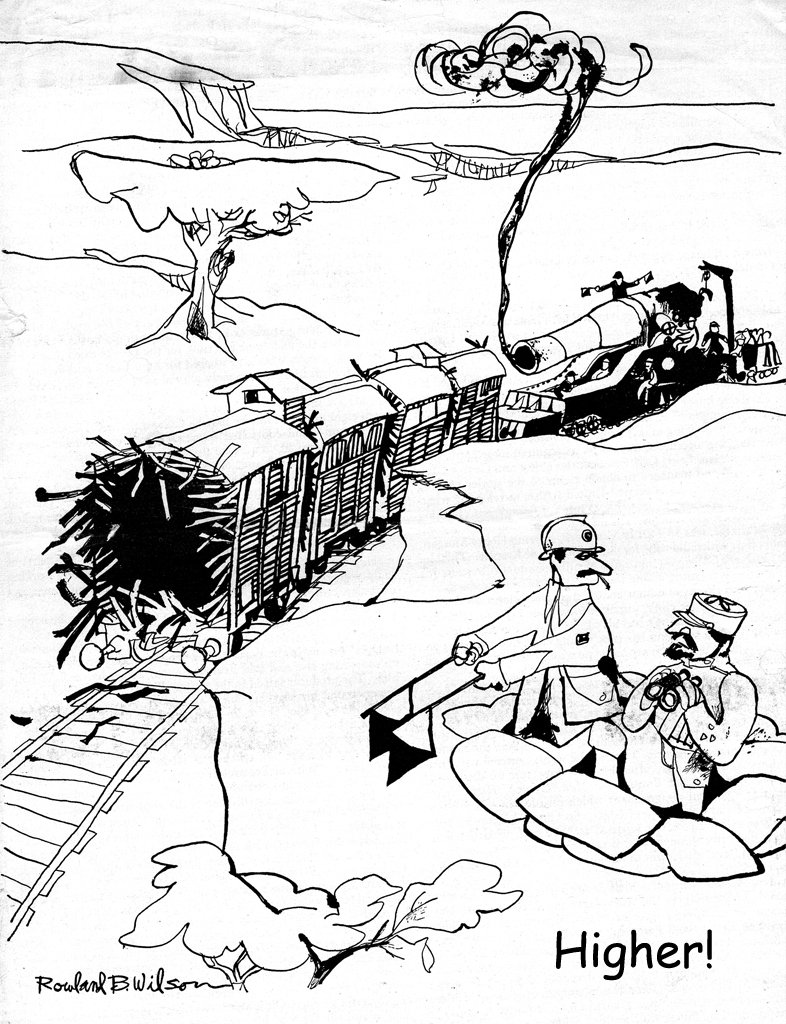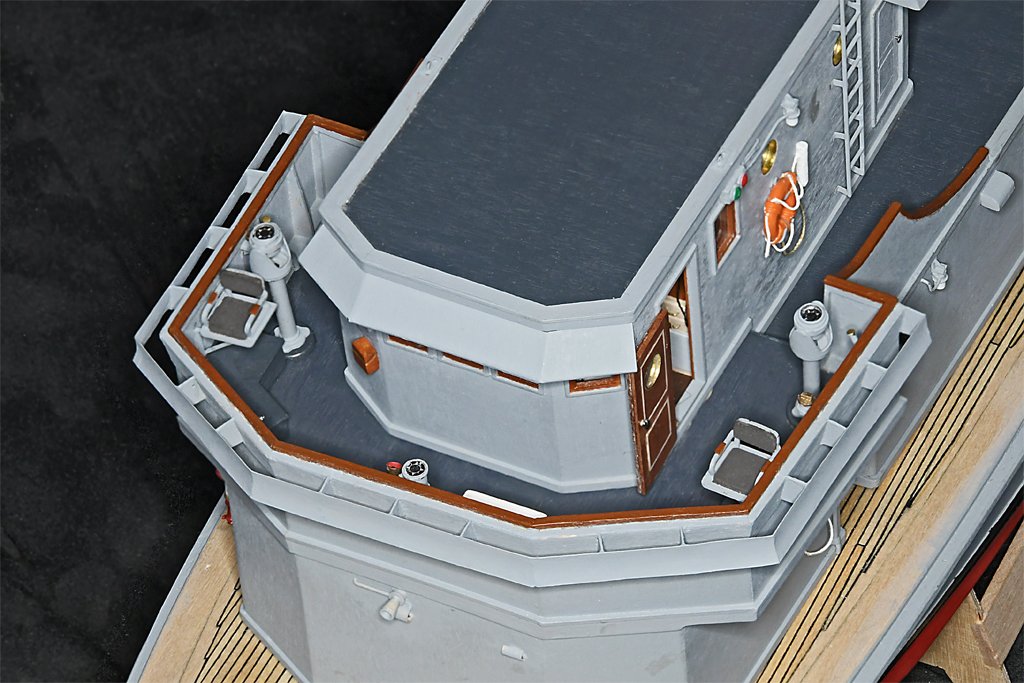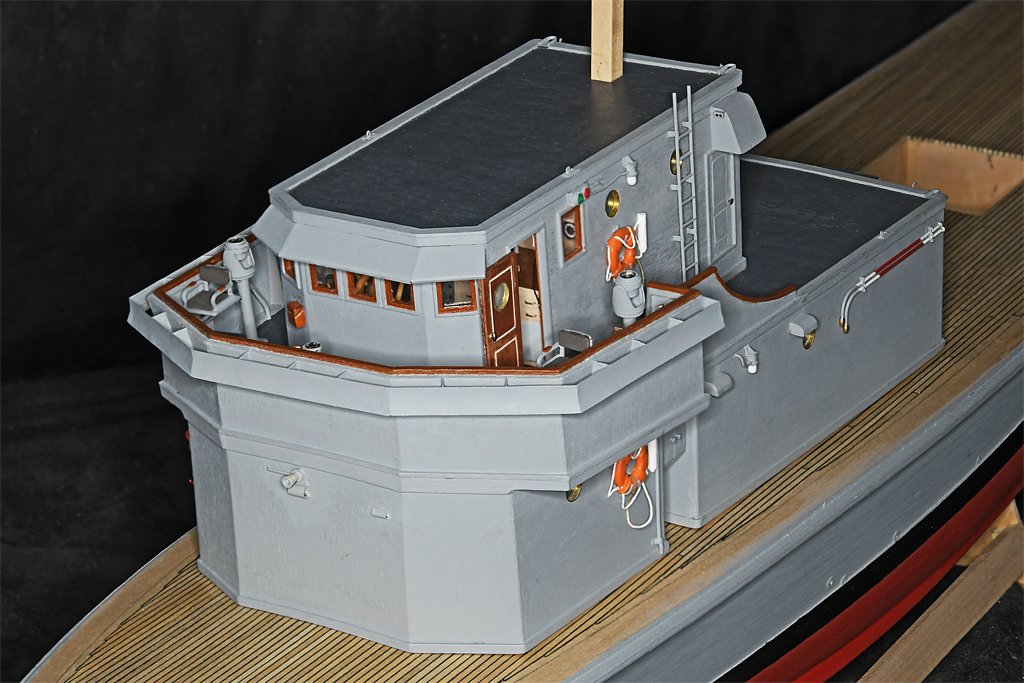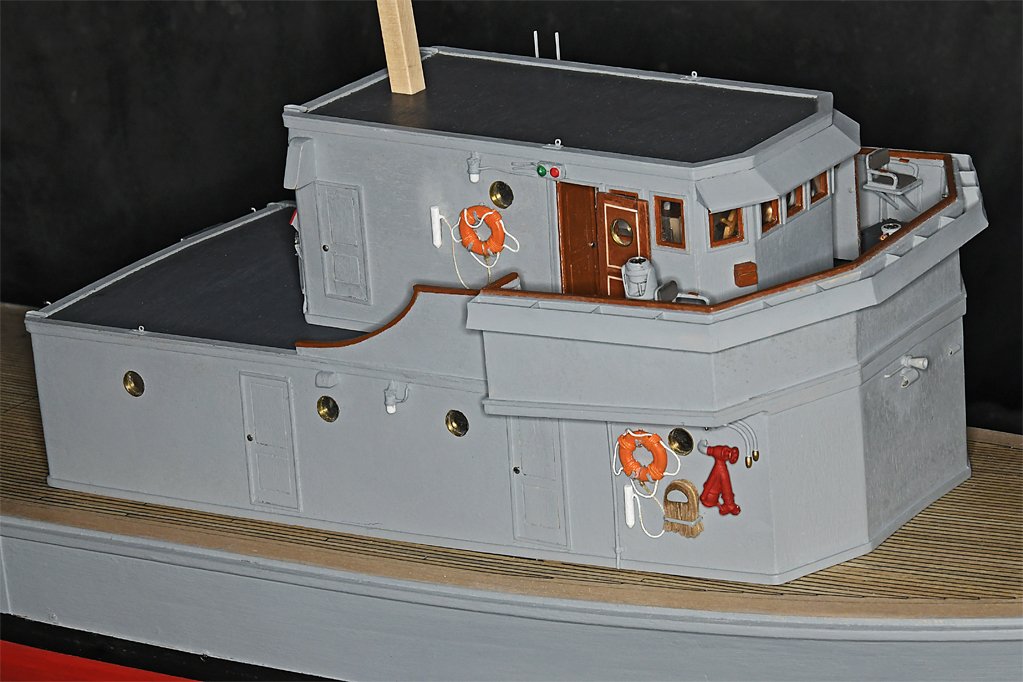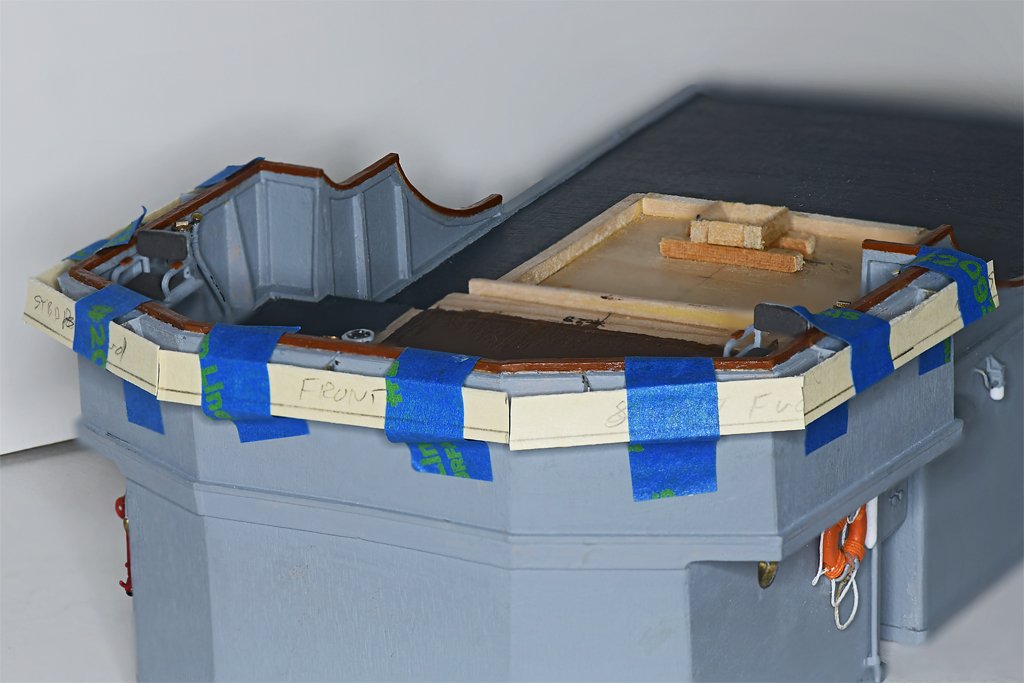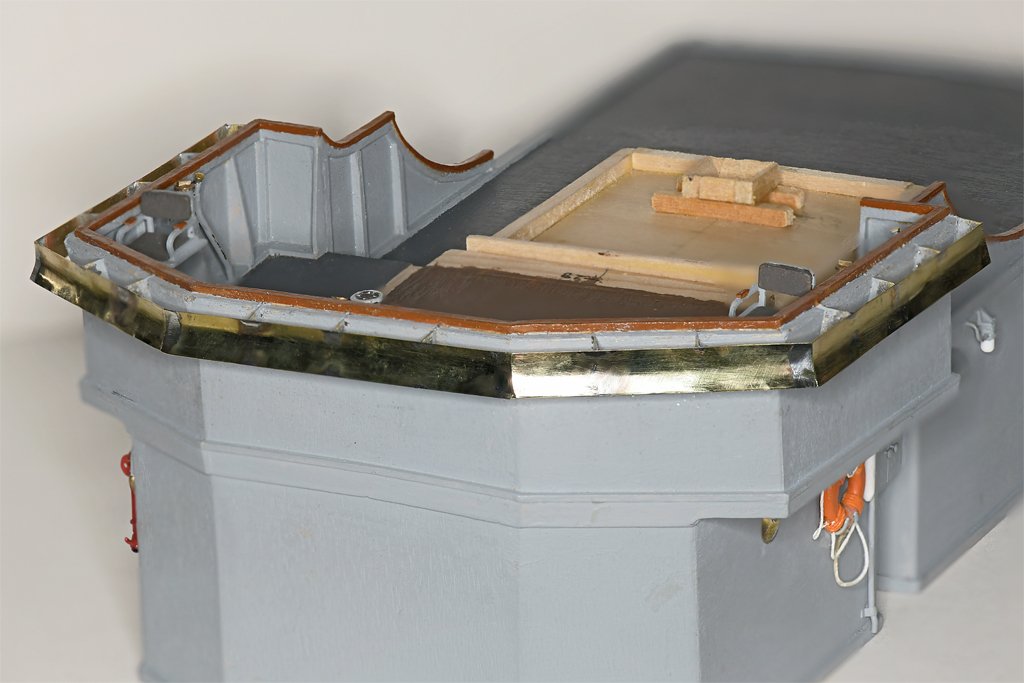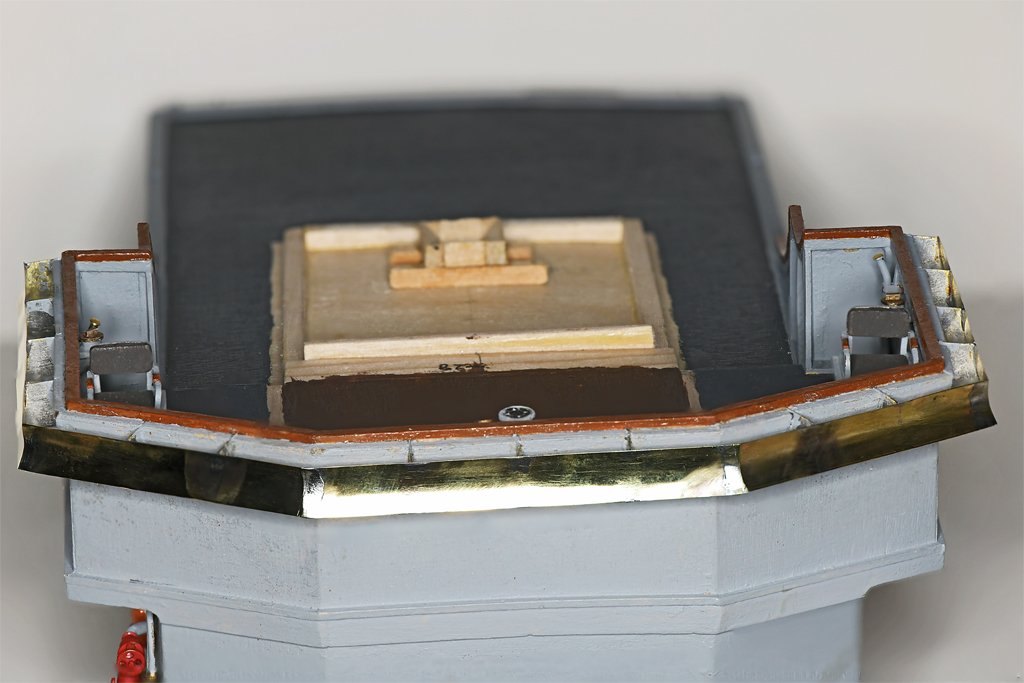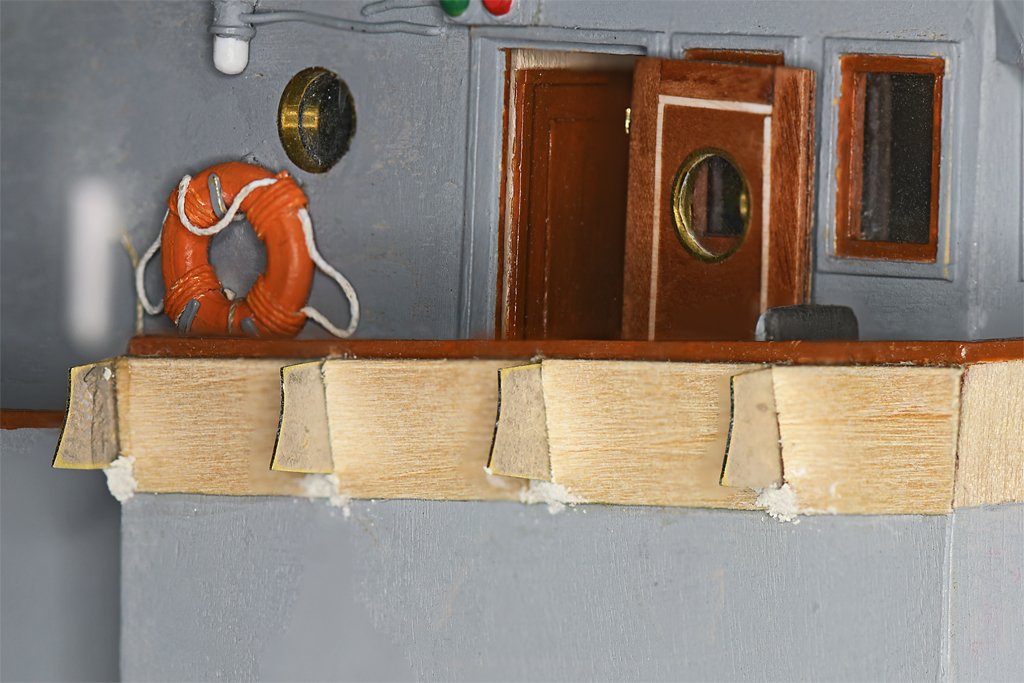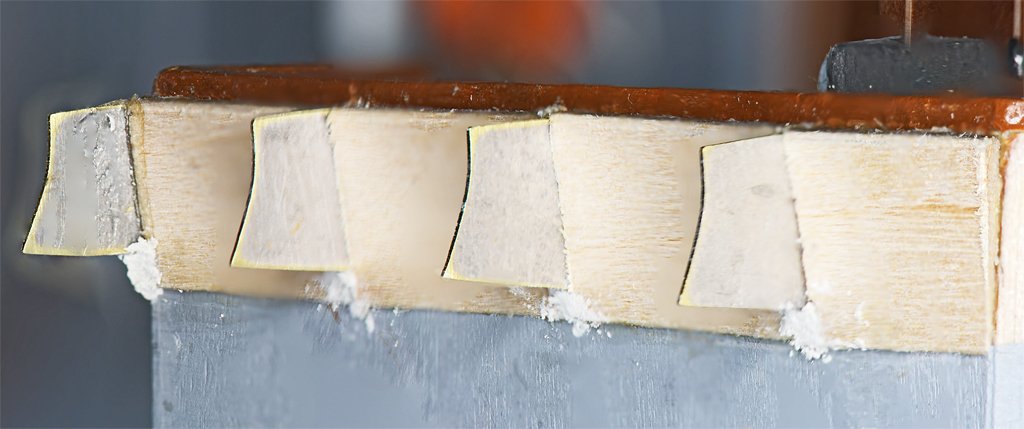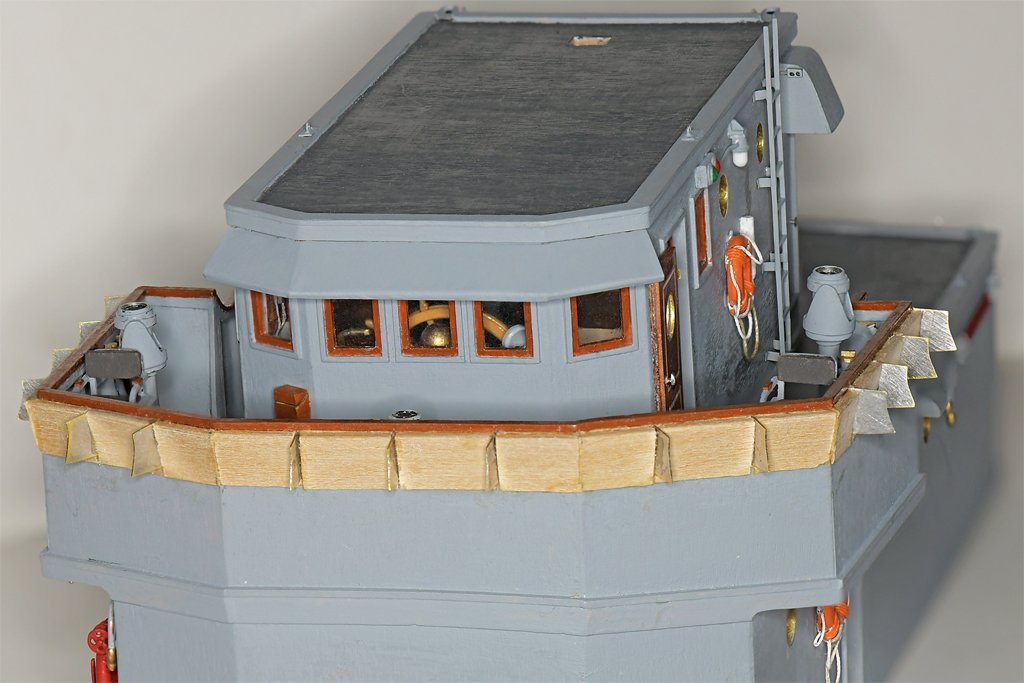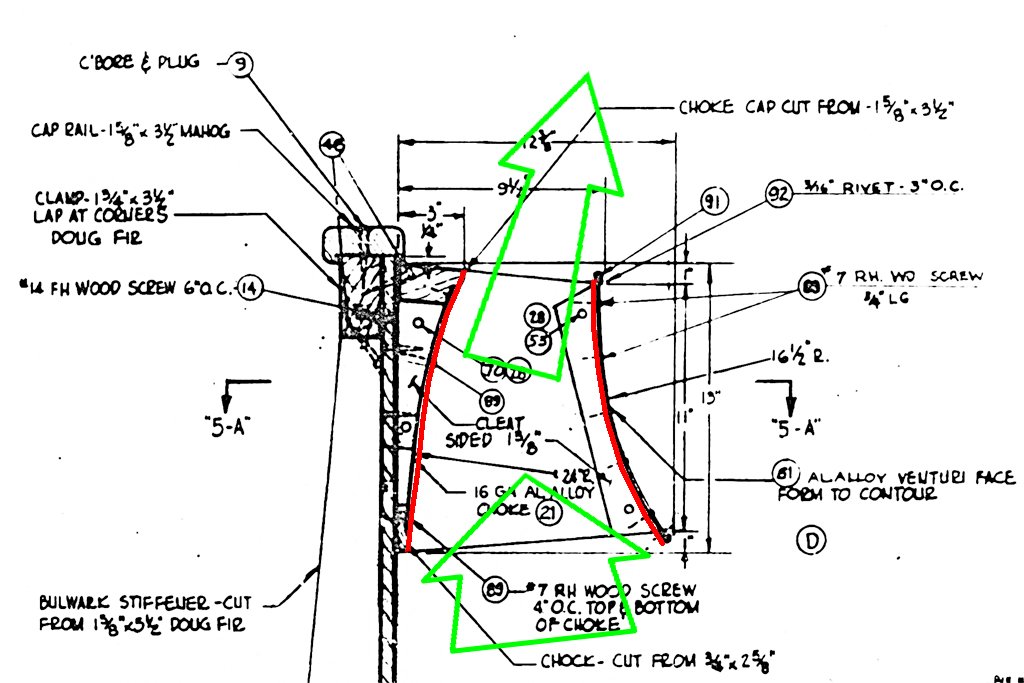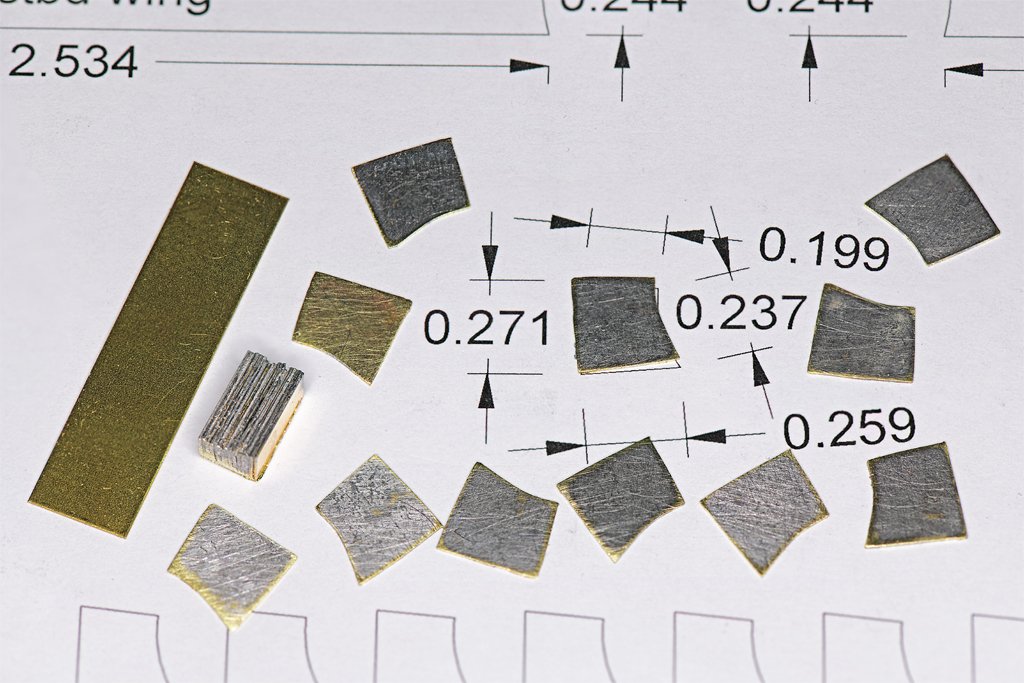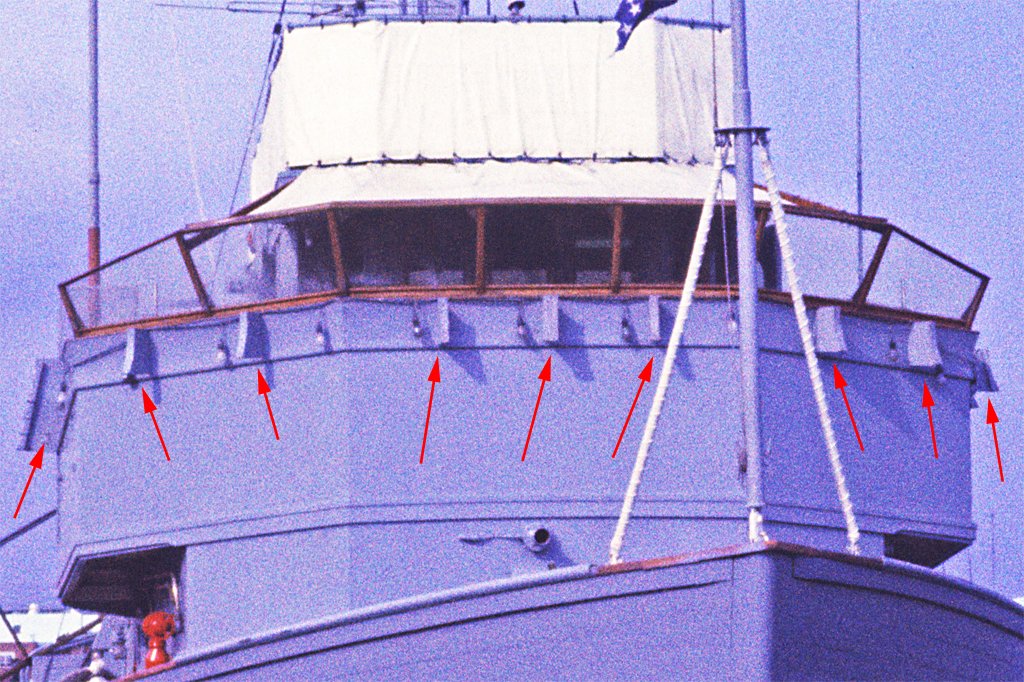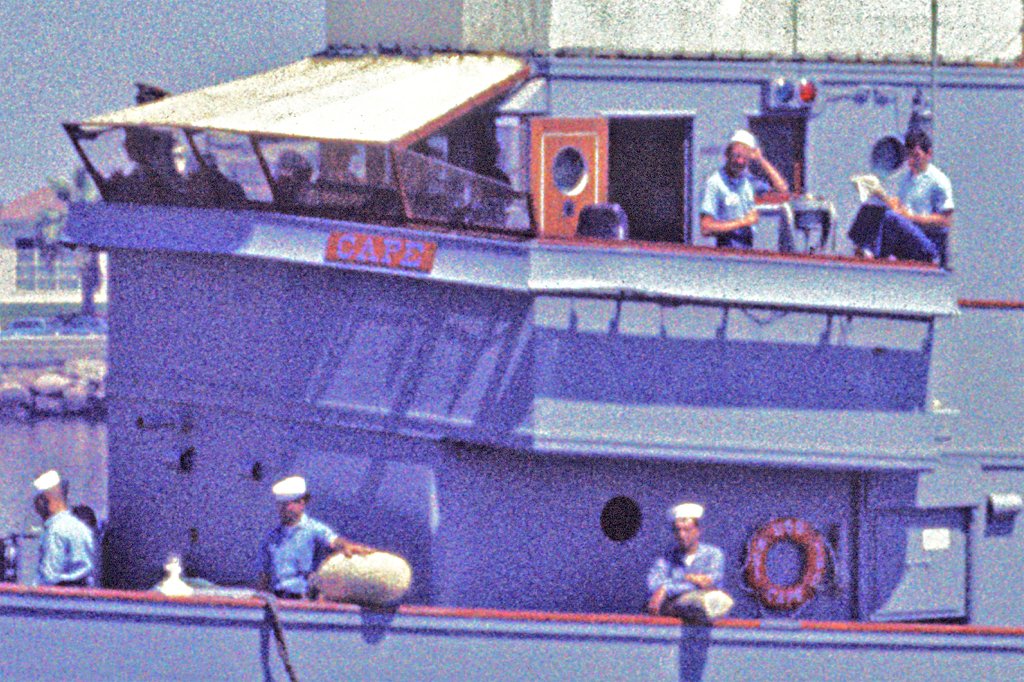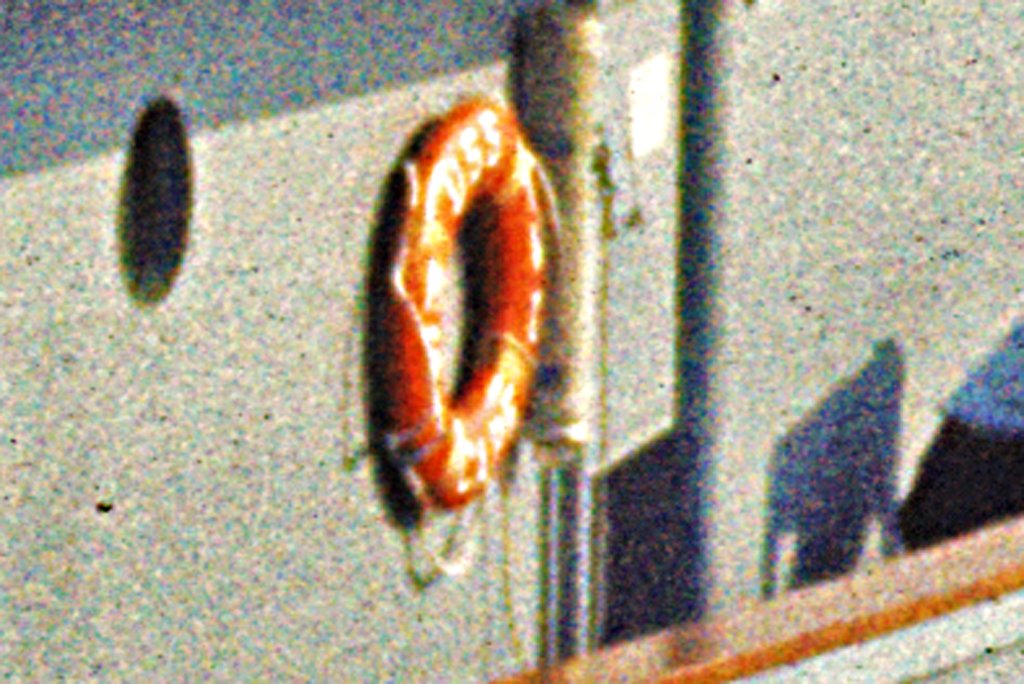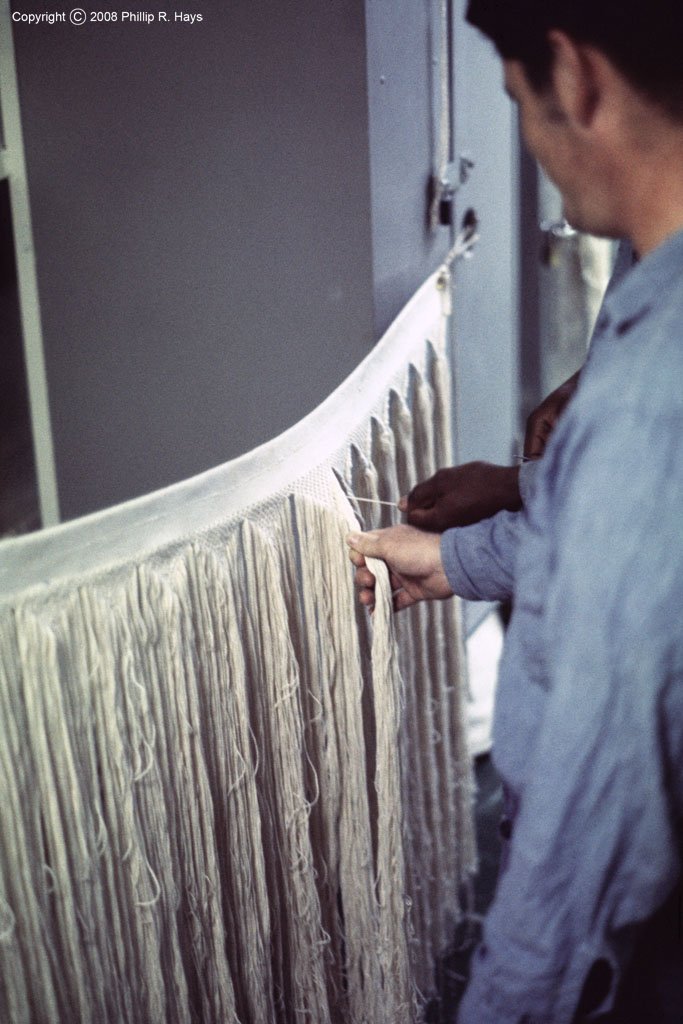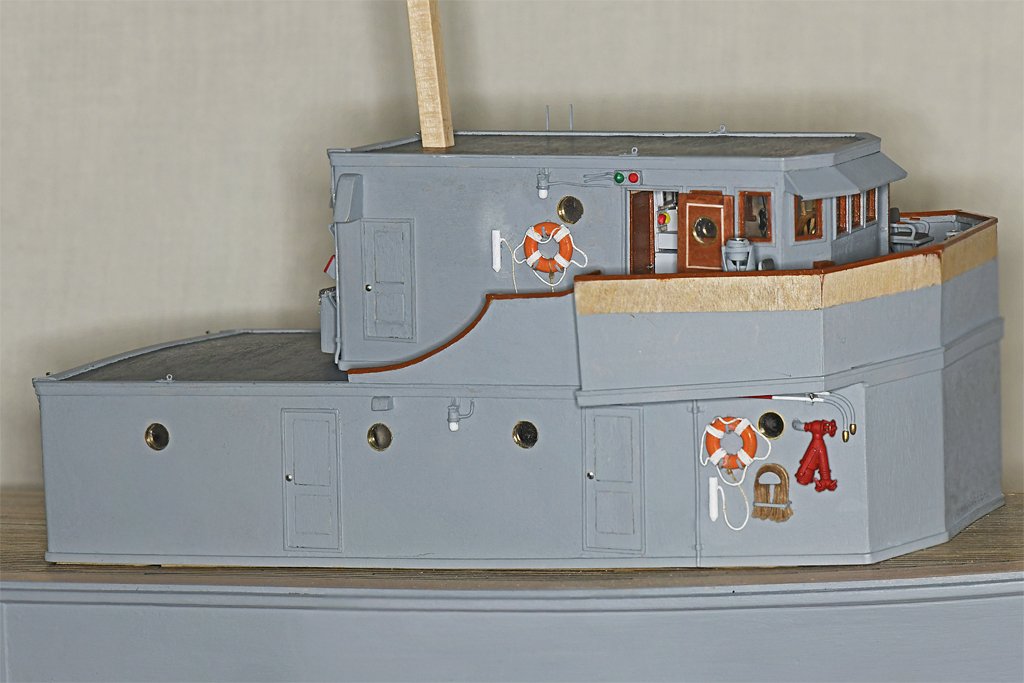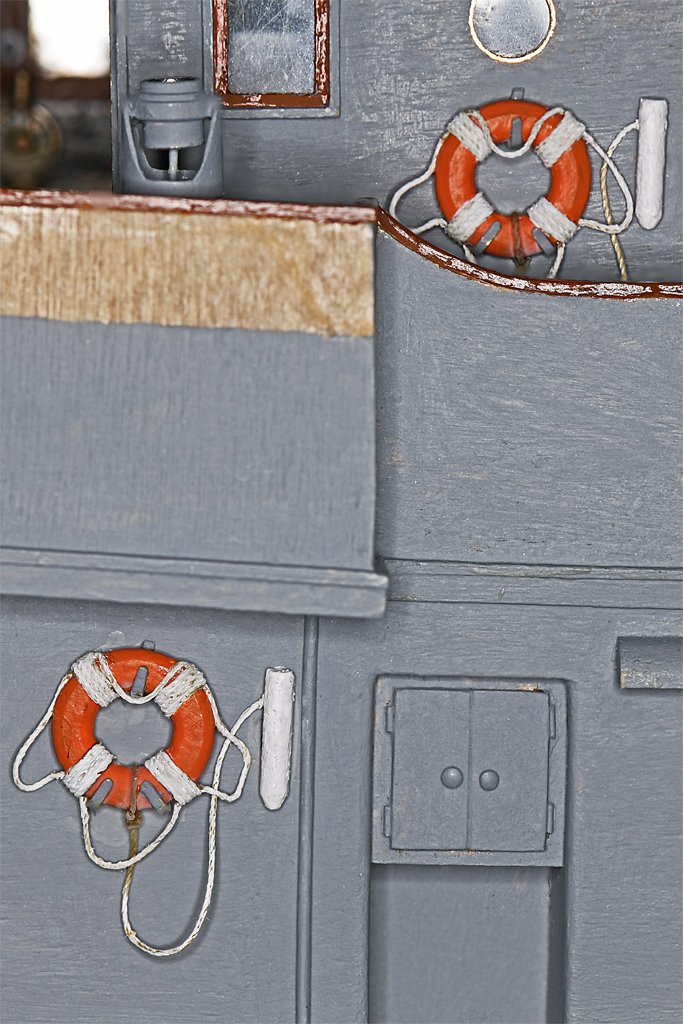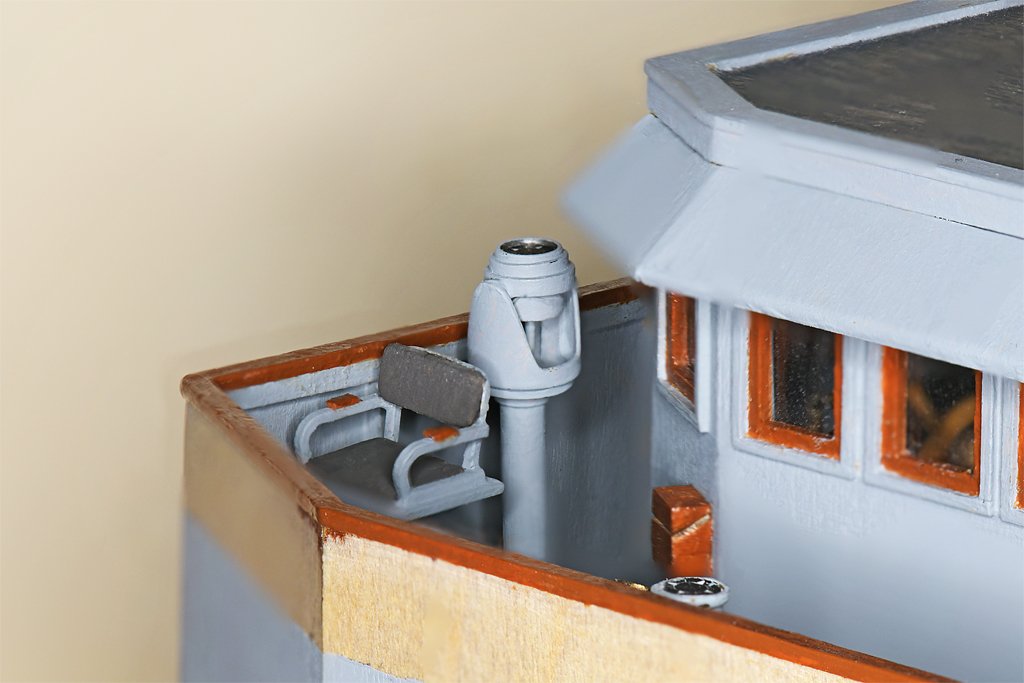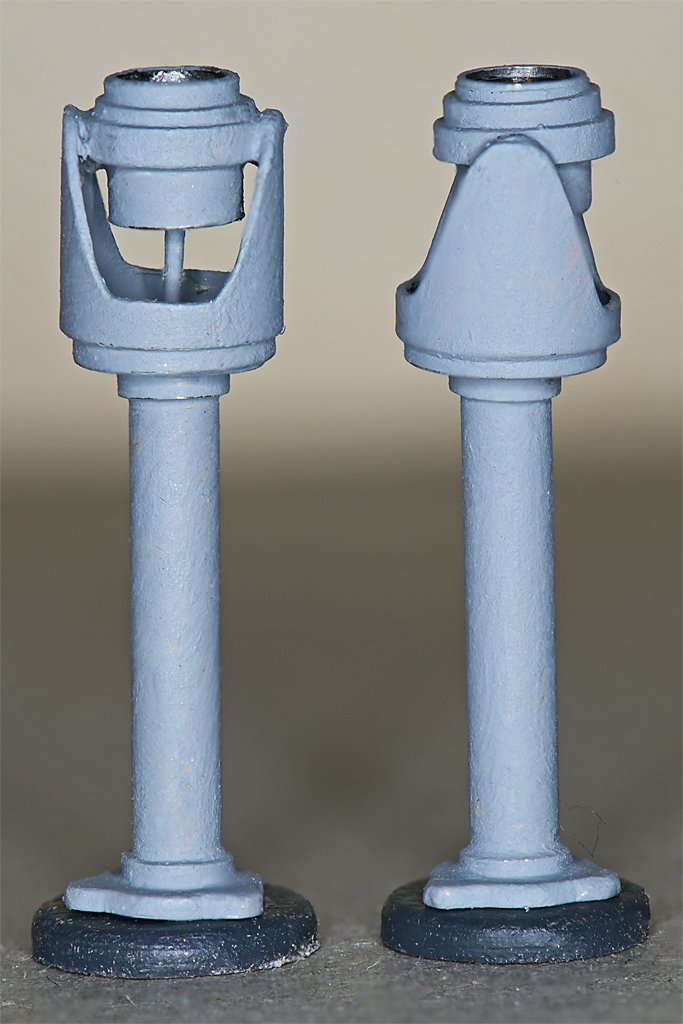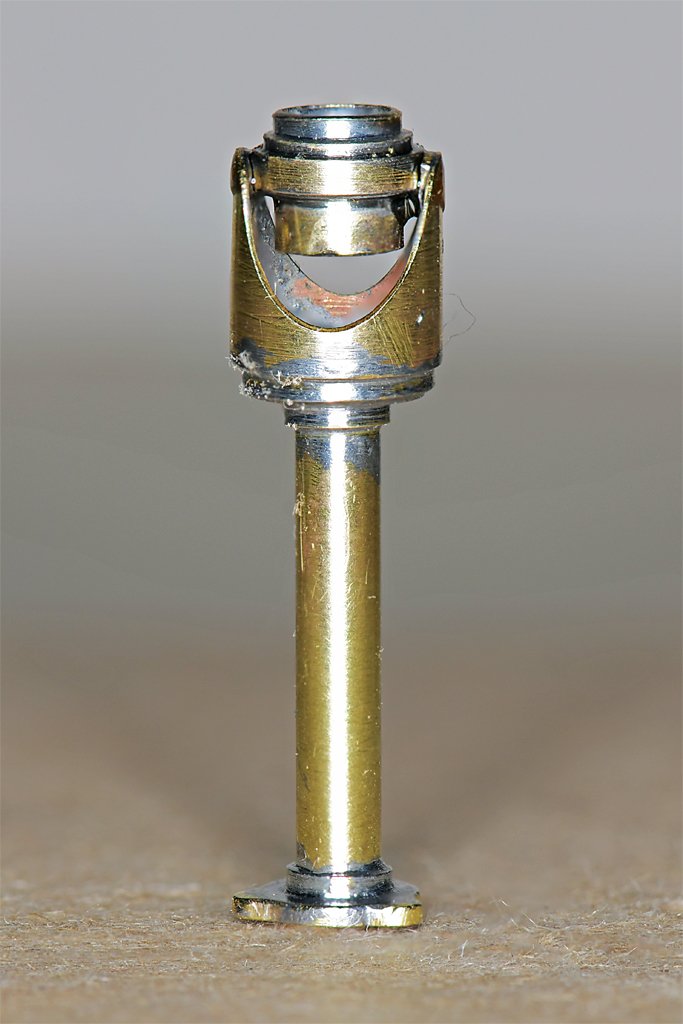-
Posts
2,410 -
Joined
-
Last visited
Content Type
Profiles
Forums
Gallery
Events
Everything posted by Dr PR
-
John, Yes. I was a 120 day wonder (from Naval Officer Candidate School) and knew nothing of mine warfare when I reported to the Cape. Like 2nd Lt Fuzz in the Beetle Baily cartoon. I had some schooling for my new job on the USS Oklahoma City CLG-5. I did a better job there!
- 438 replies
-
- minesweeper
- Cape
-
(and 1 more)
Tagged with:
-
A number of things have kept me away from the Cape model over the last couple of weeks. One was an experiment to see if I could make some 1:48 scale crew figures for the Cape. Here is a link with details about the figures. https://modelshipworld.com/topic/1006-in-need-of-shipyard-workers-or-boats-crewmembers/?do=findComment&comment=1124933 I made two enlisted men and four officers, plus one female "Rosie the Riveter" figure for comparison. The officers were experiments with different dress and working uniforms. They won't all be used on the model. Here you see Captain Fred (seated), Devine Dave and Ensign Fuzz on the Cape's bridge. Dave's uniform had a lot of sand on it - he must have just gotten back from surfing.
- 438 replies
-
- minesweeper
- Cape
-
(and 1 more)
Tagged with:
-
I am modelling in 1:48 or 1:50 scale (O scale) and have had problems finding suitable nautical figures. I still don't have a source of good sailing ship era figures. But I did notice a 50 pieces set of 1:50 figures for US$14.99: https://www.amazon.com/dp/B0CSC79VSQ?ref_=pe_123509780_1038749300_t_fed_asin_title&th=1 There are seven different male figures and five different female figures. One of each is seated. At 1:50 the males are about 5'-8" to 6'-2" (1.7 to 1.9 meters) and the women are about 5'-2" to 5'-4" (1.5 to 1.6 meters). These might be typical people found in a railway station or department store. They are made of a fairly soft white plastic - I assume it is styrene. It glues well with plastic cement. I found six of the male figures that were easily painted to represent US Navy sailors for the 1960-1970 period I am modelling. Two were painted as enlisted men and four were painted in various officer's uniforms. Some of the "officers" could be painted as enlisted. I also painted one of the women as a yard worker - maybe Rosie the Riveter - for comparison. I wanted to use the seated male figure for the Captain on the USS Cape MSI-2 model I am making. However, the seated man had folded arms and looked rather strange. In addition, his posterior/legs were too broad to fit into the Captain's chair. I heated the figure with a hair dryer and squeezed the legs closer together. Then some material was filed away from the outside of the thighs until the figure fit into the chair. The arms were a bigger problem. I used files and knives to cut away the arms below the elbows. Then the remaining plastic was shaped to create the lapels of the officer's dress blue uniform. Well, close to what it should be at least. Then the arms were cut off above the elbows on one of the standing male figures. These were shaped and glued onto the stubs of the arms on the seated figure. They fit nicely with a bit of shaping with small files. No putty or filler was needed. Then I made an officer's cap from styrene rod, with a brim fashioned from scrap 0.003 inch (0.08 mm) brass sheet. So here is an inexpensive way to get a few 1:50 scale modern era Naval figures with a little bit of reshaping and add-ons.
-
I usually use Squadron white putty. It dries quickly - 30 minutes. It sands easily. But it is chalky white and not very hard, so it is best for filling small holes and cracks up to about a millimeter wide. For narrow cracks in wood I use a glue mixed with sanding dust from the wood to be filled. Duco Cement is colorless nitrocellulose in acetone and makes a nice hard filler when mixed with wood. SigBond or Titebond aliphatic resins are white or pale yellow when dry so they changed the wood filler color a bit. Elmer's school glue is white, but it dries colorless. These all set up in 20-30 minutes, but need to sit over night to harden.
-
This is a beautiful ship! I will be watching to see how you rig the fisherman's staysail. What little I have found showed the sheets belayed to cleats on the boom. But your photos seem to show it belayed to the bulwark. I suppose it could be rigged either way depending upon how they were sailing.
- 40 replies
-
Kurt, Willapa Bay is on the West Coast of Washington, just north of the Columbia River. There is no clear weather half the year. That lumber would have sat out in the rain at the mill for some time before being loaded (probably in the rain). That's a good photo of a loaded lumber schooner. It always amazes me that they floated at all! It has a high center of gravity, and that means it will roll a lot in swells. And it will be heading south along the Pacific Coast to California for about 500 miles with swells parallel to the coast all the way. That's several days rolling in the troughs between swells. It would be a rough ride in clear weather!
-
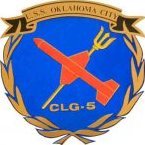
Repurposing Pool Cue Lathes?
Dr PR replied to Rich Sloop's topic in Modeling tools and Workshop Equipment
I used to use my drill as a "lathe" and turn masts and spars with files and sandpaper. But when I started my topsail schooner build I decided to get serious about mast construction. Sailing ship's masts were not cylinders or cones and had a lot of faceted sections. Here is a link to the traditional method of mast making: https://modelshipworld.com/topic/19611-albatros-by-dr-pr-finished-mantua-scale-148-revenue-cutter-kitbash-about-1815/?do=findComment&comment=908539 -
I was about 6 when I started building balsa airplane kits. These used very thin sheet wood that had to be rolled and curved to make the fuselage and wings, and it was pretty tricky. Really out of my class at the time. They weren't a thing of beauty when I finished them, but I enjoyed building them. At about 7-8 I saw my first plastic model (panther jet - probably Monogram) and I was hooked. I had a fleet of 18 plastic ships (mostly Revell) and a bunch of airplanes while in grade school. I built three or four plastic sailing ships with minimal kit rigging. When I was about 10 I wanted a model of a schooner but there were no kits in my hometown hobby shops (mid 1950s and no model magazines or Internet). Our city library had no books on ship modelling. So I built my first scratch build out of balsa based on sketches of schooners from television ("Adventures in Paradise"). That was followed a year later with a scratch built 40 foot Chris Craft cabin cruiser like one of Mom's friends had. When they visited our lakefront place I got to drive it! Again, no plans, just sketches. I used a motor drive and propeller from a Lindberg destroyer kit. So you shouldn't rush or delay kids if they are interested in ship models. 10-12 would have been way too late for me! Just encourage them if they show some interest and offer help if they need it. They will either try to build something or just forget it. If you are going to start with a wooden kit, make it very simple, like a canoe kit, or one of the Vanguard wooden boat kits (the 18 foot cutter was pretty easy). There is a lot more to learn with wooden builds than something simple like gluing pre-shaped plastic pieces together. **** Let me stress that there is no "one size fits all" age for kids to start modelling. Watch them, and if they like using their hands to make things they will be ready for some level of modelling. If they would rather read or play video games you will be wasting your time trying to introduce them to modelling.
-
John and Steve, Thanks for the compliments. And thanks to everyone for the likes.
- 438 replies
-
- minesweeper
- Cape
-
(and 1 more)
Tagged with:
-
Final venturi work. For all the worrying I did about making the venturis, I think they came out pretty nice! They seem to be very sturdy. The vents and horn on the face of the deckhouse complete (I think) all the details on the sides of the deck houses. But I still need to make the name boards.
- 438 replies
-
- minesweeper
- Cape
-
(and 1 more)
Tagged with:
-
First I painted the chokes and supports. Then I cut cardboard templates for the sections of the venturis. This let me make an approximation of the lengths and angles for the parts. Then I started cutting pieces out of 0.005 inch (0.13 mm) brass sheet. This was frustrating! I used the shear to cut the strips, and it was nearly impossible to make multiple strips of the same width throughout the entire length. I cut eleven 4-6 inch (100-150 mm) long strips in all, and only four were the desired 0.260 inch (6.6 mm) width! I debated whether to use CA glue or to solder the strips onto the supports. CA would be faster and easier, but it is somewhat brittle and might break if the venturis were hit. Soldering would be stronger and less susceptible to breaking. So I chose soldering. It went pretty smoothly, with only one of the supports being knocked off (twice) before everything was all together. Now I just need a bit more clean up to remove excess glue and solder, and then paint. The "mahogany" cap rail on the bulwarks came out a bit worse for wear while I was installing the venturis and needs another coat of paint.
- 438 replies
-
- minesweeper
- Cape
-
(and 1 more)
Tagged with:
-
I don't know when venturis started appearing on US Navy ships. I do know that we didn't have them on the USS Oklahoma City CLG-5 while I was aboard. I stood bridge watches in heavy weather and realized their absence when standing on the open bridge wings. But they were added at my last in port period (March-April 1972). I noticed the new venturis as I was departing the ship the last time in early April 1972. I posted the photo of the Cape's venturi supports in post #424. This was my first photo of the Cape taken the day I reported aboard in April 1969. But this wasn't the initial installation. The blueprint showing the venturi construction is marked "AS CONSTRUCTED PLAN" and dated 18 Sep 1959.
- 438 replies
-
- minesweeper
- Cape
-
(and 1 more)
Tagged with:
-
Venturis The Cape had venturis around the edges of the bulwarks on the open bridge. The supports are shown in the photo (left) while the venturis were being repaired. On the right you can see the venturi at the top outboard edge of the bridge bulwarks. The ship's name board is mounted on the venturi. What is a ship's venturi? It is a channel for air flow between two converging surfaces (marked in red). Air blowing against the sides of the ship's superstructure flows outward and upward along the deckhouse sides. It enters the bottom of the venturi at relatively slow speed (short and wide green arrow), and is compressed as the channel narrows. If you remember Boyle's Law (you did take physics, didn't you?) the initial pressure and volume equal the final pressure and volume P1V1 = P2V2 As the air flows through the venturi the volume decreases by about half, therefore the pressure doubles. This causes the air to flow faster to escape the top of the venturi. It comes out as a jet of air deflected upward around the sides of the bulwarks (long and narrow green arrow). Now you may be asking yourself "Who cares?" Well, that up flowing air collides with the wind coming from ahead and deflects it upward and over the bulwark. This actually does work, and has a significant effect. I have stood watch on the Cape's open bridge in a downpour. Standing back a few feet from the bulwark I was pelted by raindrops. But standing close up to the bulwark the jet from the venturi deflected oncoming wind and rain up over my head! Behind this invisible windshield the air was fairly calm. These things made standing watch on the open bridge a bit more pleasant. I have put off adding the venturis to the model for two reasons. First, they are on the outside of the wide bridge structure and subject to damage from handling while all the other work was being done. And second, I really had no idea how I was going to make them! The blueprint above shows that there is a "choke" piece attached to the bridge bulwark that forms the inner surface of the venturi channel. It was made from an assortment of wooden and metal pieces, but I decided to simplify it for the model. I shaped a strip of wood with a triangular cross section for this inner part. I tried to cut a concave surface into the face of it. First I made a scraper with the cross section pattern and tried to use it to remove wood. That was a failure - the basswood strip didn't cooperate with the scraper. Then I found a small bottle with a 1 inch diameter (25.4 mm) and wrapped it with sandpaper. This did work better than the scraper but the results weren't very consistent over the length of the strip. And after I was finished the curvature was so slight it really isn't noticeable! But the shape of the strip was good enough since it will be hidden inside the venturi anyway! To make the spacers that support the outer surface of the venturi (to be made of 0.005 inch/0.13 mm brass sheet) I cut some strips (left side of the photo) of 0.010 inch (0.25 mm) brass to a width slightly larger than the vertical dimension of the parts (0.271 inch/6.9 mm). These were sliced into short pieces 0.33 inch (8.4 mm) long, longer than the 0.259 inch (6.6 mm) length of the supports. Fifteen of these pieces were clamped together and soldered to make a single solid piece to work with. A paper template was glued to the side of the work piece and the block was filed to the correct shape. Then the spacers were sawed off the end of the soldered block. The remainder of the block can be seen on the left side of the photo - the multiple layers are readily visible. The block of spacers was reheated to melt the solder and free the individual parts. The wooden choke strip was cut into sections to fit between the individual spacers. These wooden pieces were glued to the bulwarks with Titebond Original cement. As each section was placed a brass spacer was glued to the end with Locktite Super Glue Gel. This allowed enough time to position the spacer correctly, and produced a very strong attachment. I have been dreading this assembly because it just looked like it would be so easy to break off one part while placing another. But it has been very sturdy and I have had no problems so far. I still have a bit of sanding, filing and filling on the wooden choke pieces to prepare for sealing and painting. And notice that I did repaint the life rings in proper Cape fashion!
- 438 replies
-
- minesweeper
- Cape
-
(and 1 more)
Tagged with:
-
Roel, Your question made me do a double check on the life rings, and that brought a surprise! As you can see in this photo life rings were sometimes made up as I have modeled them. But if you look closely you will see this ring is labeled "USS COVE MSI ONE." This was the Cape's sister ship (possibly the actual smallest ship in the Navy). I have been using photos of both ships for determining how to build the Cape model. And I remember that I found the life rings were made up this way on the USS Oklahoma City CLG-5 when I made the CAD model of that ship. However, when I looked at the photo in post #420 above I realized that the life rings on the Cape were painted differently. The turns around the life ring were painted orange! I'll have to correct that! Although the Cove and Cape were very much alike, there were many small differences like this between the two. This was especially true in the way the crews painted the details like this. But there were also some structural differences, such as the Cove having 12 inch (305 mm) searchlights on the O1 level open bridge and the Cape having them above on the O2 level. The ladder on the port side of the O1 superstructure was a bit farther aft on the Cape. And the O2 level life rails and lines were a bit different. Thanks for keeping me on track! And I hope everyone had a happy day. It was Thanksgiving in the US and I am stuffed more than the turkey!
- 438 replies
-
- minesweeper
- Cape
-
(and 1 more)
Tagged with:
-
Roel, I don't know if any Navy manuals said to wrap ropes like shown here, but we had it on both the Cape and Oklahoma City. I suspect it was a bosun's thing - they killed time by applying small stuff around life rails, stanchions, ladder rails and just about everything else that didn't move. Fancy knots, braiding and such were normal. For example, here sailors are removing horizontal threads from a sheet of canvas. The vertical threads will be bunched together and braided to make "McNamara's Lace." It was a decoration that was hung around the quarter deck in port and on other things to make them look fancy. The braiding around hand rails and stanchions actually served a purpose. It made it easier to grip, especially if things were wet.
- 438 replies
-
- minesweeper
- Cape
-
(and 1 more)
Tagged with:
-
Thanks to everyone for the compliments. Bill, I wondered about the dimensions. The US Coast Guard uses 30 inch (762 mm) diameter rings with an 18 inch (457 mm) interior opening. We had 24 inch (610 mm) outside diameter life rings on the USS Oklahoma City CLG-5. The inside diameter was 13 inches (330 mm). It would be easier to squeeze into the larger life rings! I used photoguestimation to determine the diameter of the life rings on the Cape as shown in this photo. The port O1 level had air ports, a ladder and some life rails close to the life ring. The blueprints show how the ladders were made, with 12 inch (305 mm) spacing between the rungs. The top three pipes of the life rails were also spaced 12 inches (this was standard for the US Navy in the post WWII period). The air ports were 12 inches diameter. This rather grainy Extachrome 400 side-on photo of the Cape shows all of these features, and it is clear the life rings were 24 inch diameter. Just about any photo of a US Navy ship will show life rails, and these are a good "ruler" for measurement. You just have to be careful about perspective distortion in photos. However, there really was no standard spacing for ladder rungs on US Navy ships. Often the blueprints show the position of the top ladder rung (about 6 inches/150 mm below the upper deck level) and bottom rung (about 12-15 inches/305-380 mm above the lower deck). Then it shows some number of rungs between the top and bottom with "Equal" spacing. This usually came out between 11-13 inches (280-330 mm) between rungs. But the blueprints say all the vertical ladders on the Cape had 12 inch spacing between rungs.
- 438 replies
-
- minesweeper
- Cape
-
(and 1 more)
Tagged with:
-
Keith, The explosions behind you aren't your concern. You want to watch for things in front of you that might blow you out of the water! Here are some more details. This time it is the life rings. The life rings were 24 inch diameter, and that comes out to half an inch (12.7 mm) at 1:48 scale. I looked through all the materials I have on hand and I could cut them from some 3/8 inch thick boxwood, or from some basswood sheets. But cutting from wood created the distinct possibility that it would break along the grain during the shaping process. It would be easier to cut them from a half inch dowel, but I didn't have any in stock. The only thing that diameter was some clear acrylic (Plexiglas) tubing. However, the walls weren't thick enough. But I did have some white styrene tubing that was a tight press fit into the acrylic and had an inside diameter a bit smaller (0.25 inch/6.35 mm) than the inside diameter of the life rings. Acrylic and styrene are easy to work, so I decided to use that combination. I sawed slices off the end of the concentric tubes and then filed/sanded them into the right thickness (0.073 inch/1.85 mm). I fit these rings over a 1/4 inch brass tube chucked into a drill and used files to round the outer edges. Then a combination of tools were used to round the inside edges and bring the opening up to the desired 0.275 inch/7 mm diameter. After they were painted orange I wrapped some carpet thread to make the ropes. Then three "J" hooks were made for each to attach them to the deck house sides. The white cylinders beside the rings are light floats. When they are positioned with the flat base upward the lights are disabled. In the water the flat base is heavier (batteries) than the top so it floats with the conical light on top and the light is turned on. The light makes it easier to find the life ring in the dark. I have added the pilot house doors and some other details. On the real ship the life rings were painted with "USS" in the top quadrant, "CAPE" on the bottom. "MSI" marked vertically on the left side and "TWO" vertically on the right. These letters would be only 0.010 to 0.015 inch (0.25 to 0.38 mm) high at 1:48 scale so I decided to not try to make them. Here is a close up of the port bridge wing with the pilot house door, pelorus, life ring and ladder to the O2 level installed. This completes the open bridge and pilot house side details. I guess the next work will be the venturis along the top of the bridge bulwarks and the port and starboard side lights. I still haven't decided how to make the venturis. I might work on some other details on the aft end of the O1 level, including the funnel. I also need to add the life rails around the O2 level and on the after end of the O1 level. And there are the windows and awnings on the front of the bridge bulwarks. All of these will be very delicate and will be saved for the last work on the deck houses. Here are a couple more photos of the open bridge and pilot house.
- 438 replies
-
- minesweeper
- Cape
-
(and 1 more)
Tagged with:
-
I was looking at the photo in post #389 and realized that I had cut the opening in the outer shell more of a "V" shape, and it should have been a wider "U" shape. I modified both units a bit, but still perhaps not wide enough at the bottom of the cut. I also realized I had forgotten to add the cable from the gyro repeater down into the base. The repeater was glued into the shell with super glue, so I just had to soak it in acetone to separate the parts. Looks like I got the repeater in the right hand part a bit misaligned when I glued it into place. I don't know if I will fix it. After it is in place on the model it won't be as noticeable as in this close up photo. (Note: I did fix it so the parts are aligned correctly.)
- 438 replies
-
- minesweeper
- Cape
-
(and 1 more)
Tagged with:
-
What are the fake gun ports made of? Epoxy is probably the all around best general purpose glue. It will glue just about anything to anything. I have used everything from very thin epoxy paint that soaks into wood grain to epoxy putty that is very good for molding parts, and it can be machined. The catch is the cure time. After mixing the two parts (be CERTAIN to follow the instructions) you have a limited time before the glue hardens. On the one hand some mixes set up in just 5 minutes, and some types take up to an hour to harden. So pick a type that gives you enough time to work with it to get things aligned, or to work with multiple assemblies, but not longer that you need. Once cured it is extremely difficult to remove. Rubbing alcohol will clean up excess before it cures. Super glues (CA or cyanoacrylate) are good for bonding metal to metal, and are commonly used for wood. Oddly enough, a web page describing many types of cyanoacrylate glues says it really isn't very good for wood! I have used it to glue metal to wood. The less you use the faster it cures. There are accelerators to speed up curing (although it is almost instant curing on metals and skin) and you can loosen it with acetone. CA gels are slower curing and give you a few seconds to position parts. But cyanoacrylates will fog most clear plastics and they leave a film on wood surfaces that interferes with staining. Use acetone to clean up residue.
-
Here are one assembled pelorus and parts for a second. The gyro repeater is already assembled from three pieces of concentric brass tubing from 0.186 to 0.250 inch (4.7 to 6.4 mm) diameter. The center piece is a 0.154 inch (3.9 mm) brass rod. The other parts are made from brass tubing from 0.125 inch to 0.311 inch (3.2 to 7.9 mm) diameter and brass plate 0.030 inch (0.76 mm) thick. The trick with any part like this with many pieces that are to be soldered together is to figure out a soldering sequence so that when adding another part an existing solder joint doesn't melt and let the thing fall apart. The gyro head was assembled separately, and then the stand was soldered together from the top down. It just needs a good brushing with a steel wire brush and a coat of paint. Grey, of course! Then I'll glue a compass rose into the top of the repeater.
- 438 replies
-
- minesweeper
- Cape
-
(and 1 more)
Tagged with:
About us
Modelshipworld - Advancing Ship Modeling through Research
SSL Secured
Your security is important for us so this Website is SSL-Secured
NRG Mailing Address
Nautical Research Guild
237 South Lincoln Street
Westmont IL, 60559-1917
Model Ship World ® and the MSW logo are Registered Trademarks, and belong to the Nautical Research Guild (United States Patent and Trademark Office: No. 6,929,264 & No. 6,929,274, registered Dec. 20, 2022)
Helpful Links
About the NRG
If you enjoy building ship models that are historically accurate as well as beautiful, then The Nautical Research Guild (NRG) is just right for you.
The Guild is a non-profit educational organization whose mission is to “Advance Ship Modeling Through Research”. We provide support to our members in their efforts to raise the quality of their model ships.
The Nautical Research Guild has published our world-renowned quarterly magazine, The Nautical Research Journal, since 1955. The pages of the Journal are full of articles by accomplished ship modelers who show you how they create those exquisite details on their models, and by maritime historians who show you the correct details to build. The Journal is available in both print and digital editions. Go to the NRG web site (www.thenrg.org) to download a complimentary digital copy of the Journal. The NRG also publishes plan sets, books and compilations of back issues of the Journal and the former Ships in Scale and Model Ship Builder magazines.




